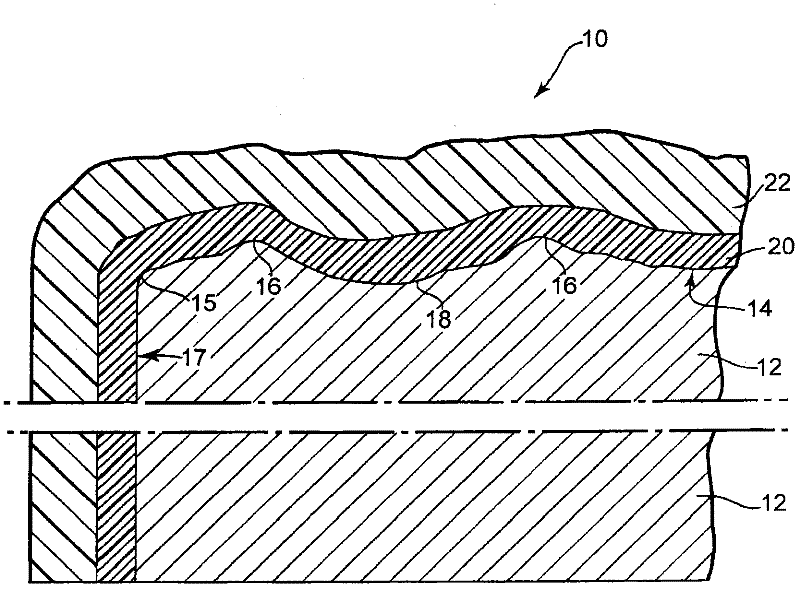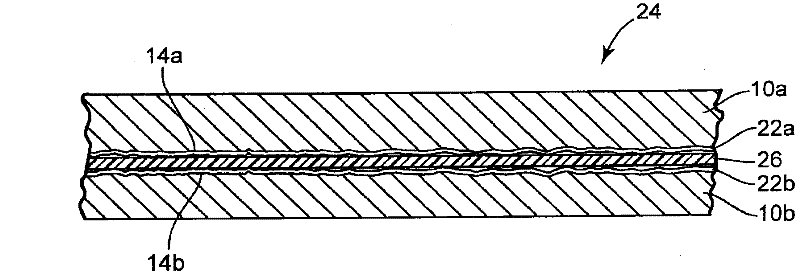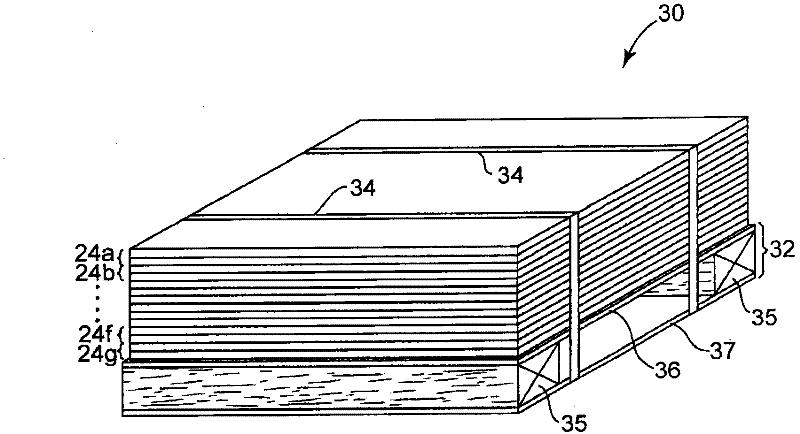Self-etching cementitious substrate coating composition
A composition and water-based coating technology, applied in coating, thin material handling, transportation and packaging, etc., can solve problems such as permanent failure and delamination
- Summary
- Abstract
- Description
- Claims
- Application Information
AI Technical Summary
Problems solved by technology
Method used
Image
Examples
Embodiment 1
[0093] multistage latex polymer
[0094]Exemplary multistage silane-functionalized, acetoacetyl-functionalized latex polymers can be prepared as follows. Add 500-800 parts of deionized water and 2-6 parts of emulsifier into the reactor. Under nitrogen protection, the reaction mixture was heated to 75-80°C. During heating, a pre-emulsion 1 is formed with 75-250 parts deionized, 2-9 parts emulsifier, 0.2-0.6 parts persulfate initiator, 50-150 parts butyl acrylate, 0-200 parts Parts of methyl methacrylate, 250-450 parts of butyl methacrylate, 0-40 parts of AAEM, 0-15 parts of vinyl silane and 5-30 parts of (meth)acrylic acid. In a separate container, form pre-emulsion 2 with 75-250 parts deionized water, 2-9 parts emulsifier, 0.2-0.6 parts persulfate initiator (e.g. sodium persulfate), 150-500 parts 5-100 parts of methyl methacrylate, 5-100 parts of butyl acrylate, 0-40 parts of AAEM, 0-15 parts of vinyl silane and 5-30 parts of (meth)acrylic acid. After the reaction mixture ...
Embodiment 2
[0096] Multistage Latex Polymers and Epoxy Functional Silanes
[0097] Using the method of Example 1 (but without using vinyl silane in the latex reaction mixture), a multistage latex polymer was prepared from a first monomer mixture comprising butyl acrylate and a second monomer mixture , methyl methacrylate, butyl methacrylate, AAEM and acrylic acid and methacrylic acid, the second monomer mixture comprising butyl acrylate, methyl methacrylate, AAEM and acrylic acid. Use 5 parts AAEM per 100 parts total monomer. Then, mix 100 parts of multistage latex polymer with 0.8 parts of SILQUEST TM A-187 gamma-glycidyloxypropyltriethoxysilane combination. Figure 4 A DSC curve is shown, which shows that the polymer has two different Tg values, a soft stage Tg at about 8.6°C and a hard stage Tg at about 89.3°C. 40% solids, MMFT less than 10°C.
Embodiment 3
[0099] Multistage Latex Polymer Containing Vinylsilane
[0100] Using the method of Example 1, a vinylsilane-functionalized multistage latex polymer was prepared from a first monomer mixture and a second monomer mixture, the first monomer mixture comprising butyl acrylate, methyl methacrylate, Butyl methacrylate, AAEM, SILQUEST A-171 vinylsilane, acrylic acid, and methacrylic acid, the second monomer mixture comprising methyl methacrylate, butyl acrylate, AAEM, A-171 vinylsilane, and acrylic acid . 5 parts of AAEM and 0.8 parts of vinylsilane were used per 100 parts of total monomer. Figure 5 A DSC curve is shown, which shows that the polymer has two different Tg values, a soft stage Tg at about 7.2°C and a hard stage Tg at about 92.5°C. 40% solids, MMFT less than 10°C.
PUM
 Login to View More
Login to View More Abstract
Description
Claims
Application Information
 Login to View More
Login to View More - R&D
- Intellectual Property
- Life Sciences
- Materials
- Tech Scout
- Unparalleled Data Quality
- Higher Quality Content
- 60% Fewer Hallucinations
Browse by: Latest US Patents, China's latest patents, Technical Efficacy Thesaurus, Application Domain, Technology Topic, Popular Technical Reports.
© 2025 PatSnap. All rights reserved.Legal|Privacy policy|Modern Slavery Act Transparency Statement|Sitemap|About US| Contact US: help@patsnap.com



